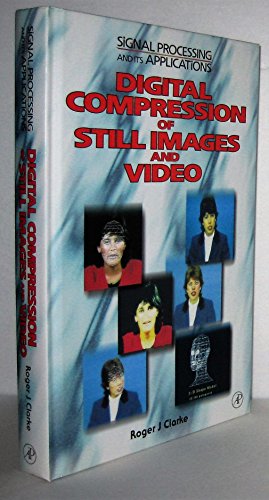Sinopsis
Spectacular advances during the last decade have altered the related disciplines of computing and telecommunications beyond all recognition. The developments in the"enabling technologies,"which have made these advances possible, have been less obvious to the casual observer. The subject of this book is one of these technologies--the coding of still images and picture sequences (video). Digital Compression of Still Images and Video is general in approach and covers all the recognized coding algorithms; explaining their basic theory in enough detail that the reader will understand the principles involved. Results which have been achieved with coding algorithms by researchers in all parts of the world are also discussed. A brief historical review of the area is included to orient those new to the field, and the work is supported by references spanning the period from the earliest work on time/frequency analysis, to the latest topic of research interest--image sequence transmission using asynchronous transfer mode (ATM) techniques. This book will make an excellent reference for graduates and researchers working on image coding and transmission, and will also be of use to those in the related areas of computer vision and multimedia developments. It is essential reading for the rapidly increasing number of technical and professional staff in the industrial environment who, maybe for the first time, are coming to grips with image coding.
De la contraportada
Spectacular advances in technology over the past decade or so have altered the related disciplines of computing and telecommunications beyond all recognition. The developments in the 'enabling technologies', which have made these advances possible, however, have been less obvious to the casual observer. One of these technologies, the coding of still images and picture sequences (video) is the subject of this book.
Digital Compression of Still Images and Video is general in approach, and covers all the recognised coding algorithms, explaining their basic theory in enough detail to understand the principles involved, and discussing the results which have been achieved with them by research workers in all parts of the world. A brief historical review of the area is also included to orient those new to the field, and the work is supported by references spanning the period from the earliest work on time/frequency analysis, to the latest topic of research interest-image sequence transmission using asynchronous transfer mode (ATM) techniques.
This book will make an excellent reference for graduates and researchers working in image coding and transmission, and will also be of use to those in the related areas of computer vision and multimedia developments. It will also be essential reading for the rapidly increasing number of technical and professional staff in the industrial environment who, maybe for the first time, are getting to grips with image coding.|Spectacular advances in technology over the past decade or so have altered the related disciplines of computing and telecommunications beyond all recognition. The developments in the 'enabling technologies', which have made these advances possible, however, have been less obvious to the casual observer. One of these technologies, the coding of still images and picture sequences (video) is the subject of this book.
Digital Compression of Still Images and Video is general in approach, and covers all the recognised coding algorithms, explaining their basic theory in enough detail to understand the principles involved, and discussing the results which have been achieved with them by research workers in all parts of the world. A brief historical review of the area is also included to orient those new to the field, and the work is supported by references spanning the period from the earliest work on time/frequency analysis, to the latest topic of research interest-image sequence transmission using asynchronous transfer mode (ATM) techniques.
This book will make an excellent reference for graduates and researchers working in image coding and transmission, and will also be of use to those in the related areas of computer vision and multimedia developments. It will also be essential reading for the rapidly increasing number of technical and professional staff in the industrial environment who, maybe for the first time, are getting to grips with image coding.
"Sobre este título" puede pertenecer a otra edición de este libro.
